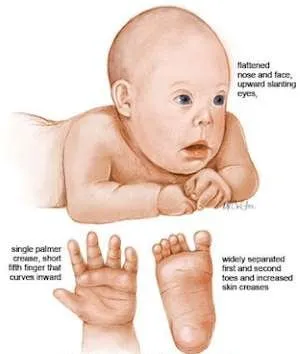
Birth Defects Paediatric patients are structural or functional abnormalities present at birth that can affect various parts of the body, including the heart, brain, spine, and limbs. These conditions arise from genetic factors, environmental influences, or a combination of both, and they can have a profound impact on a child’s health and development. Birth defects can range from minor issues, which may require minimal intervention, to severe conditions that necessitate complex medical treatment and ongoing care.
The causes of birth defects are diverse and can include genetic mutations, chromosomal abnormalities, exposure to teratogens (substances that cause birth defects), and certain infections during pregnancy. For instance, conditions such as Down syndrome result from chromosomal abnormalities, while spina bifida, a defect of the spinal cord, is linked to a lack of folic acid during early pregnancy. Environmental factors like exposure to drugs, alcohol, or certain infections can also contribute to the development of birth defects.
Symptoms of birth defects vary widely depending on the specific condition and its severity. Some birth defects are apparent at birth, while others may become noticeable as the child grows and develops. Common signs can include physical anomalies such as cleft lip or palate, heart murmurs, abnormal limb development, or neurological symptoms like developmental delays and motor impairments.
Management and treatment of birth defects depend on the type and severity of the condition. Early diagnosis through prenatal screening and postnatal evaluation allows for timely intervention, which may include surgery, medication, therapy, or a combination of these approaches. For many birth defects, a multidisciplinary team approach is necessary, involving pediatricians, surgeons, geneticists, and other specialists to provide comprehensive care and support.
In addition to medical treatments, families may need emotional support and counseling to navigate the challenges associated with birth defects. Early intervention programs and therapies can significantly improve outcomes and quality of life for affected children. With advances in medical science and technology, many children with birth defects can lead fulfilling lives with appropriate care and support.
Overall, understanding and addressing birth defects in pediatric patients require a collaborative effort from healthcare professionals, families, and support systems to ensure the best possible outcomes for affected children.

Birth Defects Pediatric patients refer to structural or functional abnormalities present from birth that can affect various parts of a child’s body. These conditions, which may involve the heart, brain, spine, limbs, or other organs, arise from a variety of causes including genetic factors, environmental influences, or a combination of both.
Birth defects in pediatric patients can be categorized into several types based on their nature and impact. Here’s a brief overview:
The symptoms of birth defects in pediatric patients can vary widely depending on the type and severity of the condition. Here are more detailed symptoms associated with different types of birth defects:
Congenital Heart Defects:
Cleft Lip/Palate:
Limb Malformations:
Metabolic Disorders:
Neurological Impairments:
Endocrine Disorders:
Down Syndrome:
Turner Syndrome:
Klinefelter Syndrome:
Cystic Fibrosis:
Sickle Cell Anemia:
Muscular Dystrophy:
Fetal Alcohol Syndrome:
Neural Tube Defects:
Spina Bifida:
Clubfoot:
Early diagnosis and intervention are crucial for managing birth defects effectively. If a birth defect is suspected, it is important to consult with healthcare professionals for accurate diagnosis, treatment planning, and support.
In conclusion, birth defects in pediatric patients encompass a broad spectrum of conditions that can significantly impact a child’s health and development. From structural abnormalities to functional disorders and chromosomal anomalies, these conditions require timely and comprehensive care to optimize outcomes. Early diagnosis and intervention are key to managing these defects effectively, ensuring that children receive the necessary support to thrive.
If you suspect your child may have a birth defect, seeking expert medical guidance is crucial. Dr. Amit Deora, a leading neurosurgeon in Indore, offers specialized care for complex conditions, including those affecting the nervous system and spine. Additionally, consulting a skilled neurologist in Indore can provide a thorough evaluation of neurological symptoms and contribute to a well-rounded treatment plan. Together, these specialists can help address birth defects and improve your child’s quality of life through personalized and effective treatment approaches.